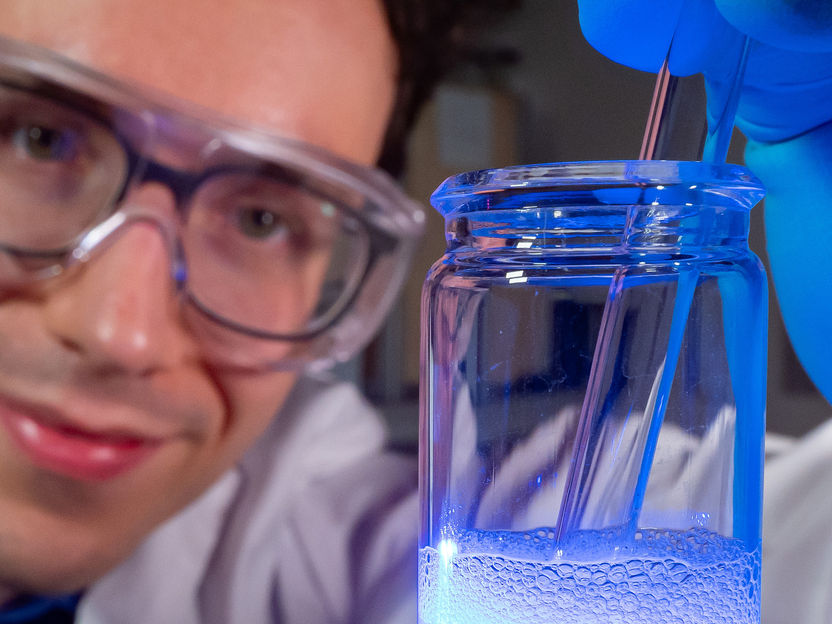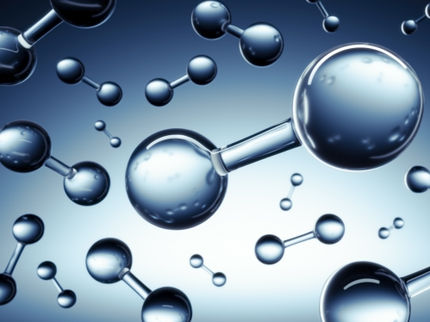Making efficient use of the Sun’s power
The search for efficient, resource-friendly catalysts
hydrogen holds vast potential as a fuel, provided that it is produced using renewable energy. But just how efficiently can we produce green hydrogen in sufficient quantities? This issue is the focus of a research group headed up by Dr Jacob Schneidewind at the Center for Energy and Environmental Chemistry at Friedrich Schiller University Jena, Germany. Their SINATRA: SolSTEP project, which focuses on finding two-step photocatalysts for the integrated production of fuels from sunlight, has been granted €2.8 million of funding for a six-year term from the German Federal Ministry of Education and Research (BMBF). The funding is part of the BMBF’s SINATRA programme, which supports junior research groups dealing with artificial photosynthesis and alternative raw materials for hydrogen production. The Jena-based project has just commenced, exploring means of producing hydrogen through photocatalysis.

Dr Jacob Schneidewind and his team are researching hydrogen production with the help of sunlight.
Jens Meyer/Uni Jena
The search for efficient, resource-friendly catalysts
The principle of photocatalysis is relatively straightforward: water is mixed with catalysts that, with the help of sunlight, split the water into hydrogen and oxygen. As Jacob Schneidewind explains, this has been demonstrated in practice, with initial test facilities constructed in Japan. But there’s a catch: while silicon-based photovoltaic systems can produce electricity from sunlight with an overall efficiency of over 20%, photocatalytic hydrogen production systems operate at just 2% efficiency. “We’re looking for catalysts that can improve this efficiency,” says the 27-year-old chemist. The catalysts also need to be sustainable and resource-friendly. Jacob Schneidewind’s team is currently researching carbon nitride materials and conjugated polymers. Both substances exist as powders and are composed exclusively of carbon and nitrogen. The key to higher efficiency could lie in the structure of these materials and their stability over time. Jacob Schneidewind says that the catalysts’ efficacy declines over time, which means they must be reactivated. With this in mind, one idea his group is pursuing is establishing a closed-loop system that facilitates repeated reactivation of declining catalysts by restoring their structure.
Sunny countries present suitable production sites
Schneidewind points to the natural world for the inspiration behind the research group’s idea. Their objective is to develop a system that functions similarly to photosynthesis in plants. It is conceivable, Schneidewind explains, to design the system in a way so that it follows a two-step approach: the first step activates the catalyst, while the second step produces the hydrogen. “We will conduct experiments to determine whether this can actually work,” he says. The aim is to have a functional prototype at the end of the six-year project. One potential approach is to have the catalyst-water mixture flow through foil pillows, which look similar to bubble wrap. When positioned in a sunny location, hydrogen and oxygen would collect within the pillows. The next step is separating the two gases by way of special filters or activated charcoal. Urea can serve as a raw material for producing these catalysts. It is used in vast quantities in agricultural contexts and would be a cost-efficient resource. The new solar fuel production plants would operate most effectively in countries with considerably higher insolation than Germany, according to Schneidewind – his recommendations being regions in North Africa or the Middle East. For the time being, however, such considerations remain a long way off.
Other news from the department science
Most read news
More news from our other portals
See the theme worlds for related content
Topic world Synthesis
Chemical synthesis is at the heart of modern chemistry and enables the targeted production of molecules with specific properties. By combining starting materials in defined reaction conditions, chemists can create a wide range of compounds, from simple molecules to complex active ingredients.

Topic world Synthesis
Chemical synthesis is at the heart of modern chemistry and enables the targeted production of molecules with specific properties. By combining starting materials in defined reaction conditions, chemists can create a wide range of compounds, from simple molecules to complex active ingredients.





























































